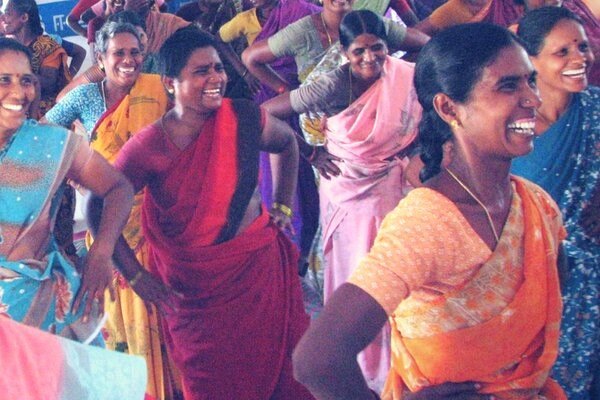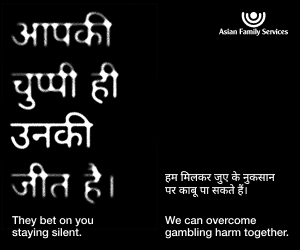People power is the answer to climate emergencies

Two related but separate developments in southern India recently – one quite disturbing and the other a great ray of hope – carry a message that not just India but the whole world would do well to take on board.
The alarming depletion of drinking water resources and plunging water tables in a growing number of countries around the world has been in the public discourse for some years. There have been increasing reports about cities running out of drinking water and urban authorities scrambling to make it available to citizens.
According to reports, half of India is on the verge of a freshwater crisis as are several countries in Africa, the Middle East, parts of Europe and South America, accounting for more than half of the world’s population.
Rampant urban development, deforestation, filling up of natural water bodies for construction activity, overpopulation and pollution have contributed to this dire situation, at least in several Indian cities including Chennai.
But the death knell has been sounded by climate change. It is altering weather patterns significantly, causing more extreme weather events – cyclones, coastal storm surges and unusually long droughts because of delayed or depleted rainfall.
Chennai crisis
Chennai, the capital of India’s southern state of Tamil Nadu and one of the country’s major metros, has not received rainfall for 191 days – a record. Drinking water resources have run dry and the situation is so dire that news reports since earlier this month say a growing number of offices and schools are being indefinitely closed because their taps have run dry.
The water supply authorities have prioritised for residential areas to receive water but that is also being affected with government tankers bringing water to residential complexes where people have to queue up for their daily supplies. Riots have broken out in some areas and there have been cases of violent altercations in the queues.
There is little that the government or any authority can do except arrange to cart water from distant reservoirs, in turn depleting the supply of those areas and could potentially snowball into a statewide or even region wide crisis.
Unfortunately, this situation is not a one-off and not just restricted to southern India. We are bound to hear of more such instances from across the world in the months and years to come – especially from geographies where population densities are more intense like in urban India, the water tables are depleting, rainfall is erratic and governments and authorities are ill-prepared to deal with such situations.
The Indian government and those of many other developing countries have made rapid strides in natural disaster management and mitigation, with instances of efficient and successful mass evacuations ahead of predicted severe weather and coastal surges following tsunamis.
However, no government appears to be adequately prepared for climate emergencies. Unlike severe weather, they cannot be predicted with any certainty but trends over the past few years prove beyond doubt that climate patterns are no longer stable and the world’s water cycle seems a lot more erratic than it has been since records have been maintained.
Ray of hope
While these stories about drinking water supplies in Chennai are nothing short of alarming, another heartwarming story from the same state – Tamil Nadu – brings a shining ray of hope.
And what is even more significant is that the very factor that potentially exacerbates a climate emergency situation has been leveraged to mitigate a very similar situation: the factor of population density.
Twenty thousand rural women have come together in an extraordinary grassroots movement in the Tamil Nadu district of Vellore to revive a seasonally flowing river named Naganadhi after it went dry some 15 years ago.
Over four years, the women with negligible funding from authorities built 3500 recharge wells and used pebbles and boulders to stem rainwater flows so the scarce rainwater could trickle down into the riverbed so that the river could start flowing again.
They achieved this feat in 2018 and their success is seen across the country as a grassroots initiative that could be replicated elsewhere not only in India but also the world where significant populations are available to participate in such a life-saving exercise.
This is an excellent instance of harnessing people power for their very own weal.
And the message that it emphatically conveys is that governments need to adopt bottom-up approaches in addressing and dealing with climate emergencies in sync with any big-ticket, capital and infrastructure intensive top-down initiatives they may be putting in place.
The Modi 2.0 government has already embarked on a programme to join several Indian rivers together to redistribute water to deficient areas. The first stage of such a programme connecting the Kshipra and Narmada rivers successfully went on stream earlier this week in west-central India. It’s a big capital-intensive project that should have been initiated decades ago.
But as the Vellore experiment demonstrates, smaller projects could deliver results quicker and with greater local impact. The government’s ‘Sab kasaath, sab kavikaas’ (working together for progress for all) well encapsulates this idea of involving the greatest possible number of people to achieve a desirable common end, as was so wonderfully shown by the 20,000 women of Vellore district.
Two related but separate developments in southern India recently – one quite disturbing and the other a great ray of hope – carry a message that not just India but the whole world would do well to take on board.
The alarming depletion of drinking water resources and plunging water tables in a...
Two related but separate developments in southern India recently – one quite disturbing and the other a great ray of hope – carry a message that not just India but the whole world would do well to take on board.
The alarming depletion of drinking water resources and plunging water tables in a growing number of countries around the world has been in the public discourse for some years. There have been increasing reports about cities running out of drinking water and urban authorities scrambling to make it available to citizens.
According to reports, half of India is on the verge of a freshwater crisis as are several countries in Africa, the Middle East, parts of Europe and South America, accounting for more than half of the world’s population.
Rampant urban development, deforestation, filling up of natural water bodies for construction activity, overpopulation and pollution have contributed to this dire situation, at least in several Indian cities including Chennai.
But the death knell has been sounded by climate change. It is altering weather patterns significantly, causing more extreme weather events – cyclones, coastal storm surges and unusually long droughts because of delayed or depleted rainfall.
Chennai crisis
Chennai, the capital of India’s southern state of Tamil Nadu and one of the country’s major metros, has not received rainfall for 191 days – a record. Drinking water resources have run dry and the situation is so dire that news reports since earlier this month say a growing number of offices and schools are being indefinitely closed because their taps have run dry.
The water supply authorities have prioritised for residential areas to receive water but that is also being affected with government tankers bringing water to residential complexes where people have to queue up for their daily supplies. Riots have broken out in some areas and there have been cases of violent altercations in the queues.
There is little that the government or any authority can do except arrange to cart water from distant reservoirs, in turn depleting the supply of those areas and could potentially snowball into a statewide or even region wide crisis.
Unfortunately, this situation is not a one-off and not just restricted to southern India. We are bound to hear of more such instances from across the world in the months and years to come – especially from geographies where population densities are more intense like in urban India, the water tables are depleting, rainfall is erratic and governments and authorities are ill-prepared to deal with such situations.
The Indian government and those of many other developing countries have made rapid strides in natural disaster management and mitigation, with instances of efficient and successful mass evacuations ahead of predicted severe weather and coastal surges following tsunamis.
However, no government appears to be adequately prepared for climate emergencies. Unlike severe weather, they cannot be predicted with any certainty but trends over the past few years prove beyond doubt that climate patterns are no longer stable and the world’s water cycle seems a lot more erratic than it has been since records have been maintained.
Ray of hope
While these stories about drinking water supplies in Chennai are nothing short of alarming, another heartwarming story from the same state – Tamil Nadu – brings a shining ray of hope.
And what is even more significant is that the very factor that potentially exacerbates a climate emergency situation has been leveraged to mitigate a very similar situation: the factor of population density.
Twenty thousand rural women have come together in an extraordinary grassroots movement in the Tamil Nadu district of Vellore to revive a seasonally flowing river named Naganadhi after it went dry some 15 years ago.
Over four years, the women with negligible funding from authorities built 3500 recharge wells and used pebbles and boulders to stem rainwater flows so the scarce rainwater could trickle down into the riverbed so that the river could start flowing again.
They achieved this feat in 2018 and their success is seen across the country as a grassroots initiative that could be replicated elsewhere not only in India but also the world where significant populations are available to participate in such a life-saving exercise.
This is an excellent instance of harnessing people power for their very own weal.
And the message that it emphatically conveys is that governments need to adopt bottom-up approaches in addressing and dealing with climate emergencies in sync with any big-ticket, capital and infrastructure intensive top-down initiatives they may be putting in place.
The Modi 2.0 government has already embarked on a programme to join several Indian rivers together to redistribute water to deficient areas. The first stage of such a programme connecting the Kshipra and Narmada rivers successfully went on stream earlier this week in west-central India. It’s a big capital-intensive project that should have been initiated decades ago.
But as the Vellore experiment demonstrates, smaller projects could deliver results quicker and with greater local impact. The government’s ‘Sab kasaath, sab kavikaas’ (working together for progress for all) well encapsulates this idea of involving the greatest possible number of people to achieve a desirable common end, as was so wonderfully shown by the 20,000 women of Vellore district.









Leave a Comment